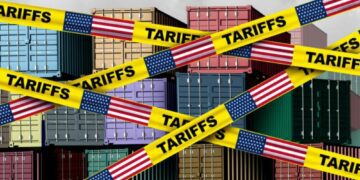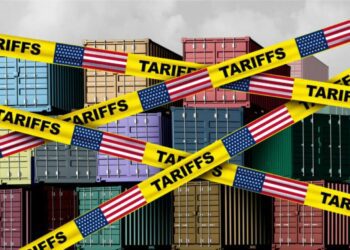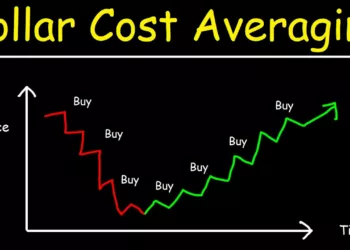Food is a fundamental necessity for human survival, and the global food industry has grown into a multi-trillion dollar behemoth. As an investor, understanding the complexities of the food production chain and its impact on your portfolio is crucial. In this blog post, we’ll delve into the intricacies of the food industry and explore various investment opportunities within the sector.
The Food Production Chain: From Farm to Fork
The food production chain comprises several stages, each presenting unique challenges and investment prospects. Let’s examine these stages in detail:
1. Agriculture and Farming
The foundation of the food industry lies in agriculture and farming. This stage involves the cultivation of crops and the rearing of livestock. Key players in this sector include:
- Agricultural commodity producers such as Archer Daniels Midland (ADM) and Bunge (BG)
- Fertilizer and agrochemical companies like Mosaic (MOS) and Nutrien (NTR)
- Farm equipment manufacturers such as Deere & Company (DE) and AGCO Corporation (AGCO)
Investing in these companies provides exposure to the agricultural sector, which is influenced by factors such as weather patterns, global demand, and government policies.
2. Food Processing and Manufacturing
Once the raw materials are harvested, they undergo processing and manufacturing to create packaged food products. This stage is dominated by large multinational corporations, including:
- Packaged food giants like Nestlé (NSRGY), PepsiCo (PEP), and Mondelez International (MDLZ)
- Meat processors such as Tyson Foods (TSN) and JBS (JBSAY)
- Dairy companies like Danone (DANOY) and Saputo (SAPIF)
These companies often have diverse product portfolios and strong brand recognition, making them attractive investment options for those seeking stable returns.
3. Distribution and Logistics
Getting food products from manufacturing facilities to retailers and consumers requires a robust distribution and logistics network. Key players in this stage include:
- Food distributors such as Sysco Corporation (SYY) and US Foods Holding Corp (USFD)
- Logistics companies like United Parcel Service (UPS) and FedEx Corporation (FDX)
- Cold storage providers such as Americold Realty Trust (COLD) and Lineage Logistics
Investing in these companies offers exposure to the growing demand for efficient food distribution and the increasing importance of cold chain logistics.
4. Retail and Food Service
The final stage of the food production chain involves selling food products to consumers through various channels, including:
- Supermarkets and grocery stores like Walmart (WMT), Kroger (KR), and Tesco (TSCDY)
- Food service providers such as McDonald’s (MCD), Yum! Brands (YUM), and Starbucks (SBUX)
- Online food delivery platforms like DoorDash (DASH) and Uber Eats (UBER)
Investing in these companies allows you to capitalize on evolving consumer preferences and the growing trend of eating out and ordering in.
Investment Opportunities in the Food Industry
Now that we’ve explored the food production chain let’s examine the various ways individual investors can gain exposure to the food industry.
1. Direct Stock Investment
The most straightforward approach is to invest directly in the stocks of companies operating within the food industry. This allows you to handpick companies that align with your investment strategy and risk tolerance. However, it’s essential to conduct thorough research and diversify your portfolio to mitigate risk.
2. Exchange-Traded Funds (ETFs)
ETFs offer a convenient way to gain broad exposure to the food industry without the need to select individual stocks. Some popular food-related ETFs include:
- Invesco DB Agriculture Fund (DBA): Tracks a diversified basket of agricultural commodity futures
- VanEck Vectors Agribusiness ETF (MOO): Invests in companies operating across the agribusiness sector
- First Trust Nasdaq Food & Beverage ETF (FTXG): Focuses on companies primarily engaged in the manufacturing, sale, or distribution of food and beverage products
ETFs provide instant diversification and lower transaction costs compared to buying individual stocks.
3. Mutual Funds
Mutual funds are another option for investors seeking professional management and diversification. Some mutual funds that invest in the food industry include:
- Fidelity Select Consumer Staples Portfolio (FDFAX): Invests in companies that manufacture and distribute food, beverages, and other consumer staples
Mutual funds offer the benefit of active management but often come with higher fees compared to ETFs.
4. Agricultural Commodities
Investors can also gain exposure to the food industry by investing in agricultural commodities such as corn, wheat, soybeans, and livestock. This can be done through futures contracts or ETFs that track commodity prices. However, investing in commodities can be volatile and requires a deep understanding of the underlying market dynamics.
Food for Thought: Challenges and Opportunities
The food industry is not without its challenges and controversies. Some of the key issues facing the sector include:
- Climate change and sustainability: As global temperatures rise, the food industry must adapt to changing weather patterns and focus on sustainable practices to ensure long-term viability.
- Health and nutrition: With increasing consumer awareness about the link between diet and health, food companies are under pressure to offer healthier options and reformulate existing products.
- Supply chain disruptions: The COVID-19 pandemic has highlighted the fragility of global food supply chains, emphasizing the need for resilience and adaptability.
Despite these challenges, the food industry also presents exciting opportunities for investors, such as:
- Agritech and precision agriculture: Technological advancements in areas like precision farming, vertical farming, and genetic engineering could revolutionize food production and create new investment avenues.
- Plant-based and alternative proteins: The growing demand for plant-based and alternative protein sources presents a significant growth opportunity for companies operating in this space.
- E-commerce and online grocery: The pandemic has accelerated the adoption of online grocery shopping and food delivery services, creating new investment prospects in the digital food space.
Bottom Line
The food industry is a vast and complex ecosystem that offers a wide range of investment opportunities. By understanding the food production chain and the various ways to invest in the sector, individual investors can make informed decisions and potentially profit from the ever-growing demand for food. However, it’s crucial to consider the challenges and risks associated with the industry and conduct thorough research before making any investment decisions.
As the famous saying goes, “You are what you eat.” As an investor, it’s essential to understand what goes into the food you eat and how it impacts your investment portfolio. By staying informed and adapting to the evolving landscape of the food industry, you can potentially secure a slice of the pie in this dynamic and essential sector.
Click this link to learn about the low risk investments for 2024.
This article is for informational purposes only and not investment advice. Please consult an investment professional before making significant decisions related to any investment product or security.















































